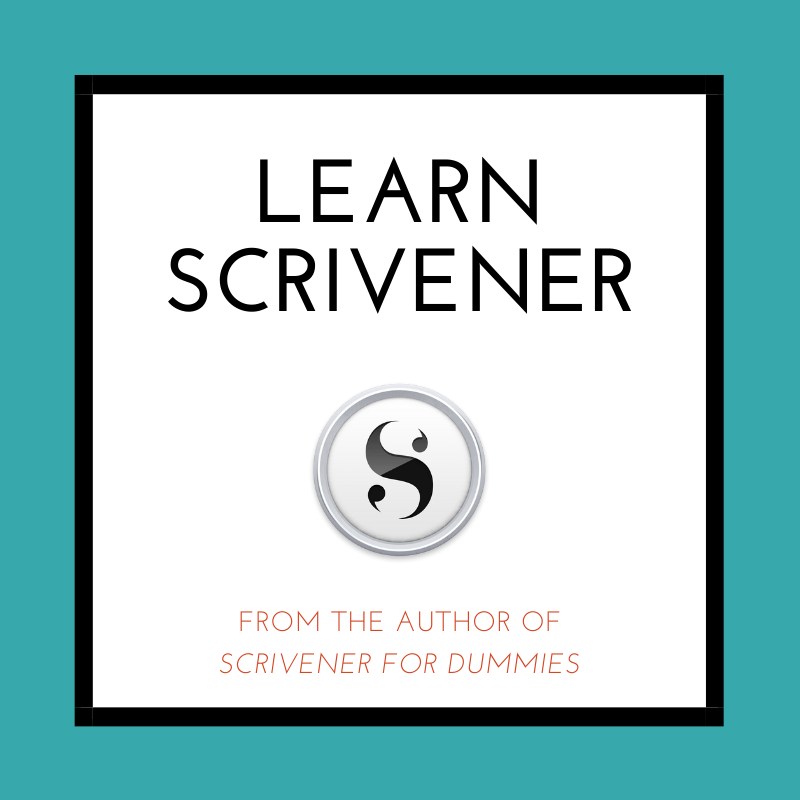Have you ever found yourself staring at a blank page, feeling the weight of creative paralysis? You’re not alone. Many writers experience the dreaded writing rut, where ideas seem to vanish and motivation dwindles. But fear not, for there’s a hero in the realm of writing that can rescue you: Pre-Writing. In this article, we will personify Pre-Writing, giving it a voice and character to guide you through its transformative powers. By the end, you’ll discover how pre-writing can enhance your skills, foster connections, and lead you to success.

The Birth of Pre-Writing: An Introduction
Once upon a time, in the land of Ideas, where thoughts and concepts frolicked freely, a new entity emerged. This entity, known as pre-writing, was born with a purpose: to help writers navigate the often tumultuous seas of creativity. Unlike its siblings, Drafting and Editing, Pre-Writing was a gentle and nurturing spirit dedicated to preparing writers for their journeys.
Pre-writing knew that before a writer could embark on their quest to craft a masterpiece, they needed to arm themselves with clarity, direction, and inspiration. So, Pre-Writing set out to teach writers the art of the preparation, demonstrating how to organize thoughts, brainstorm ideas, and create outlines. Pre-Writing’s mission was to empower writers to face the blank page with confidence and creativity.
Understanding the Essence of Pre-Writing
Pre-writing, with its warm and inviting demeanor, approached writers who were lost in the wilderness of ideas. “Come,” it said, “let me show you the way.” Pre-Writing believed that understanding its essence was the first step to unlocking a writer’s potential.
Pre-Writing explained that it was not merely an initial step but a vital process that involved several key activities:
Brainstorming: “Imagine a storm of ideas,” Pre-Writing whispered. LetLet’s remind them that no idea was too wild or insignificant. them swirl and dance in your mind. Capture them without judgment, for every idea has potential.”
– Researching: “Dive into the ocean of knowledge,” it urged, “gather information, facts, and insights that will fuel your writing.”
– Outlining: “Draw a map of your journey,” Pre-Writing advised, “outline the path your writing will take, from the introduction to the conclusion.”
– Freewriting: “Let your thoughts flow freely,” it encouraged, “write without inhibition to uncover hidden gems within your mind.”
By engaging in these activities, writers could harness the power of Pre-Writing to organize their thoughts and set a clear direction for their work.
Brainstorming – The Gathering of Ideas
As Prewriting guided writers through the process, it began with Brainstorming, a lively and dynamic activity. “Picture yourself in a grand hall,” Pre-Writing said, “where ideas of all shapes and sizes gather, eager to be chosen.”
In this grand hall, writers were encouraged to let their minds roam freely. Pre-writingBrainstorming: “Imagine a storm of ideas,” Pre-Writing whispered. Let’s remind them that no idea was too wild or insignificant. “Every idea is a seed,” it explained, “and with the right nurturing, it can grow into something magnificent.”

Pre-writing suggested various brainstorming techniques:
Mind Mapping: This technique involves drawing a central idea and creating branches that extend from it. Each branch represents a new thought or concept, allowing you to organize and explore connections between different ideas visually.
Lists: This method involves writing down everything that comes to mind related to a specific topic or problem. Creating a simple list can uncover connections and patterns that may not have been immediately apparent, helping you generate new insights and ideas.
Word Association: With word association, you start with a single word and then allow your mind to wander to related terms and ideas. This free-flowing process can help stimulate creative thinking by generating unexpected connections and sparking new pathways of thought.
Through these techniques, writers could gather a rich collection of ideas, laying the foundation for their writing projects.
Researching – Diving into the Ocean of Knowledge
Once a plethora of ideas had been gathered, Prewriting led writers to the next stage: Research. “Now that you have your seeds,” it said, “it’s time to find the soil and water they need to grow.”
Pre-writing encouraged writers to immerse themselves in the wealth of information available. “Think of research as a treasure hunt,” it suggested, “each piece of information you find adds value to your work.”
During the research process, Pre-Writing highlighted the importance of:
“Credible Sources: It is crucial to seek reliable and reputable sources. Accuracy and credibility are essential for building trust with your readers.
Diverse Perspectives: When preparing to write, consider multiple viewpoints. A well-rounded understanding of your topic enriches your writing.
Note-Taking: Organize your findings and take detailed notes to reference information when needed quickly.”
By conducting thorough research, writers could enhance the depth and quality of their work, making their writing more informative and compelling.
With ideas and information in hand, Pre-Writing led writers to the crucial step of Outlining. “Think of your outline as a map,” it said, “a guide that will lead you from the beginning to the end of your writing journey.”
Pre-writing emphasizes the importance of a well-structured outline, which serves as a blueprint for the entire writing project. “An outline provides clarity and direction,” it explained, “it helps you organize your thoughts and ensures a logical flow of ideas.”
Pre-writing shared various outlining methods:
- Traditional Outline: “Use bullet points and sub-points to organize your main ideas and supporting details,” it suggested.
- Storyboarding: “Visualize your writing as a series of scenes,” Pre-Writing illustrated, “each scene representing a key point or argument.”
- Index Cards: “Write each idea or section on a separate card,” it advised, “arrange and rearrange them until you find the perfect order.”
By creating a detailed outline, writers could see the big picture of their project, making the writing process smoother and more efficient.
Freewriting – Unleashing Creativity
As writers prepared to embark on their writing journey, Pre-Writing introduced them to the final stage of its process: Freewriting. “Now that you have your map,” it said, “it’s time to let your creativity flow freely.”
Pre-writing explained that Freewriting was about writing without constraints or self-criticism. “Set a timer and write continuously,” it encouraged, “don’t worry about grammar, punctuation, or structure. Just let your thoughts pour onto the page.”
Through Freewriting, writers could:
Incorporating the practice of Freewriting into their daily routine can be a transformative experience for writers. According to Pre-Writing, the technique of Freewriting can be instrumental in overcoming writer’s block as it allows individuals to break through mental barriers, unlocking new ideas and perspectives. By embracing the process of Freewriting, writers can tap into their subconscious mind and discover hidden insights that may not have surfaced through more structured writing techniques.
This can lead to exploring new and valuable perspectives, enriching the creative process. Moreover, through consistent practice, writers can build confidence in their abilities, as each session of Freewriting contributes to their growth and development. The encouragement to trust in one’s skills and embrace the writing process can inspire and motivate writers as they progress in their creative journey.
Pre-Writing’s Role in Skill Enhancement
Pre-writing knew that its influence extended beyond the preparation phase. It played a crucial role in enhancing a writer’s overall skills. “By practicing Pre-Writing regularly,” it said, “you can sharpen your abilities and become a more effective writer.”
Pre-Writing highlighted several key benefits:
– Improved Organization: According to the source, “Pre-writing is essential for structuring your thoughts, leading to more coherent and logical writing.”
– Enhanced Creativity: The source emphasizes that through Brainstorming and Freewriting, you can effectively harness your creative potential by exploring various ideas.
– Increased Productivity: It was mentioned that having a clear plan and direction from Pre-Writing will help you write more efficiently and with greater focus.
By embracing Pre-Writing, writers could develop their skills and become more confident and capable in their craft.
Fostering Connections Through Pre-Writing
Pre-writing also knew the importance of fostering connections. “Writing is not a solitary endeavor,” it said; “it’s a way to connect with others and share your ideas.”
Pre-writing encouraged writers to use its techniques to:
When it comes to writing, it’s important to remember the following tips:
1. Collaborate: Sharing your outlines and ideas with others is a great way to gain new insights and perspectives. Working with others can lead to a more well-rounded and impactful piece of writing.
2. Engage Readers: Show your audience that you value their time and attention by creating a well-structured and thoroughly researched piece. Engaging your readers with quality content will help your writing resonate with them.
3. Build Community: Joining writing groups and workshops can give you the support and inspiration you need to continue growing as a writer. Connecting with fellow writers can also lead to valuable feedback and encouragement.
By fostering connections, writers could enhance their work and build a network of like-minded individuals.
Achieving Success with Pre-Writing
Finally, Pre-Writing wanted writers to understand that its ultimate goal was to help them achieve success. “Success is not just about finishing a piece,” it said, “it’s about creating something meaningful and impactful.”
Pre-Writing believed that by following its process, writers could:
- Produce High-Quality Work: “Thorough preparation leads to well-crafted writing,” the article explained. Your work will stand out for its clarity and depth.”
- Meet Deadlines: “With a clear plan, you’ll manage your time more effectively,” Pre-Writing assured, “you’ll be able to meet deadlines without stress.”
- Gain Recognition: “Consistently producing great work will earn you recognition and respect in your field,” it said.
By embracing Pre-Writing, writers could not only overcome their writing ruts but also achieve their goals and aspirations.
Why Scrivener Would Be a Benefit Here
As we journey through the realms of writing, discovering the transformative power of Pre-Writing, there’s another invaluable ally that can enhance your writing process: Scrivener. This robust writing software is designed to support writers through every stage of their project, making it an ideal companion for those embracing Pre-Writing. Let’s explore how Scrivener can benefit you here, seamlessly integrating with Pre-Writing techniques to amplify your productivity and creativity.
Understanding Scrivener: An Overview
Scrivener is more than just a word processor. It’s a comprehensive writing tool that provides a structured environment for planning, organizing, writing, and editing your work. Here’s how Scrivener can enhance your Pre-Writing process:
Organization: Scrivener allows you to organize your project into manageable sections that can be easily navigated and rearranged.
– Research Integration: You can store all your research materials within the software, making it easy to reference and incorporate information.
– Flexibility: The software supports various writing styles and structures, catering to the unique needs of each writer.
Enhancing Brainstorming with Scrivener
When it comes to brainstorming, Scrivener offers several features that align perfectly with Pre-Writing techniques:
– Document Notes: Within Scrivener, you can create separate notes for each idea, allowing you to brainstorm freely without worrying about losing track of your thoughts.
– Mind Mapping Integration: While Scrivener doesn’t offer mind mapping, you can integrate mind maps created with other tools and store them within your Scrivener project for easy access.
– Corkboard View: Scrivener’s Corkboard View allows you to visualize your ideas on virtual index cards, making it easy to see connections and organize your thoughts.
Streamlining Research with Scrivener
Researching is a critical component of Pre-Writing, and Scrivener excels in helping you manage and integrate your research materials:
– Research Binder: Scrivener’s Binder feature lets you store all your research documents, links, and references in one place, organized into folders and subfolders.
Split Screen: Scrivener’s split-screen feature allows you to view your research and your writing side by side, making it easy to incorporate information directly into your writing.
– Annotations and Comments: Scrivener allows you to add annotations and comments to your research documents, helping you highlight important information and keep track of critical points.
Crafting Outlines with Scrivener
Outlining is a crucial Pre-Writing activity, and Scrivener offers robust tools to help you create detailed and flexible outlines:
– Outliner View: Scrivener’s Outliner view lets you create a hierarchical outline of your project, complete with synopses, word counts, and custom metadata.
– Drag and Drop: You can easily rearrange sections of your outline by dragging and dropping them, allowing for flexible organization as your ideas evolve.
– Templates: Scrivener provides various templates for different types of writing projects, which can help you structure your outline according to best practices for your genre.
Unleashing Creativity with Scrivener
Freewriting is about letting your thoughts flow without inhibition, and Scrivener provides a supportive environment for this creative process:
– Distraction-Free Writing Mode: Scrivener’s full-screen mode lets you focus entirely on your writing, minimizing distractions and fostering a flow state.
– Snapshots: You can take snapshots of your work at different stages, allowing you to experiment freely with new ideas without fear of losing previous versions.
– Text Statistics: Scrivener provides detailed text statistics and word count targets, helping you track your progress and stay motivated during freewriting sessions.
Integrating Pre-Writing Techniques with Scrivener
By combining the structured approach of Pre-Writing with the powerful features of Scrivener, you can enhance every stage of your writing process. Here’s how to make the most of this integration:
1. Set Up Your Project: Create a new Scrivener project for your writing endeavor. Set up folders for brainstorming, research, outlining, and drafting.
2. Gather Ideas: Use Scrivener’s Corkboard or Document Notes to brainstorm ideas and explore different concepts.
3. Organize Research: Store all your research materials in the Research Binder, adding annotations and comments as needed.
4. Create an Outline: Use the Outliner view to craft a detailed outline of your project, organizing your ideas into a coherent structure.
5. Freewrite: Use Scrivener’s distraction-free mode and snapshots to engage in freewriting and explore new ideas and perspectives.
6. Track Progress: Monitor your word count and text statistics to stay on track and maintain momentum throughout your project.
Embrace the Synergy of Pre-Writing and Scrivener
By embracing the synergy between Pre-Writing and Scrivener, you can transform your writing process into a well-organized, efficient, and creative journey. Scrivener provides the tools and structure needed to support Pre-Writing techniques, helping you overcome writing ruts, enhance your skills, foster connections, and achieve success. So, as you embark on your next writing project, let Pre-Writing guide you, and let Scrivener be your steadfast companion on the path to literary excellence.
As a wordsmith seeking to enhance your writing prowess, you’ll find many remarkable writing tools and apps. Let’s explore some of the best options:
- Scrivener: A beloved companion for authors, Scrivener offers a treasure trove of features. It helps you track plot threads, store character notes, structure your work, and—most importantly—get serious writing done. While it’s not free, the investment is worth it for serious writers.
- Ulysses: If distraction-free writing is your goal, Ulysses is your muse. Its minimalist interface allows you to focus solely on your words. Plus, it syncs seamlessly across devices, ensuring your creativity flows wherever you are.
- iA Writer: Ideal for online writing (think Medium or WordPress), iA Writer combines simplicity with elegance. Its clean design encourages a flow state, making it a favorite among bloggers and content creators.
- Plottr: For those who thrive on outlining, Plottr is a gem. It helps you map out your novel, organize scenes, and keep your plot threads in check. Whether you’re a pantser or a plotter, Plottr has your back.
- Reedsy Book Editor: If you’re working on a book, Reedsy’s online editor is a fantastic choice. It’s accessible, collaborative, and offers a straightforward interface for drafting and editing your masterpiece.
- yWriter: Scene-based writers rejoice! yWriter lets you organize your novel into scenes, track characters, and maintain a bird’s-eye view of your work. It’s a powerful tool for structuring your narrative.
Remember, the best writing app is the one that aligns with your unique needs and writing style. Whether you’re crafting screenplays, novels, or blog posts, these tools will be your trusty companions on your literary journey. Happy writing! 📝✨
Beyond Words on a Page!
Kevin



